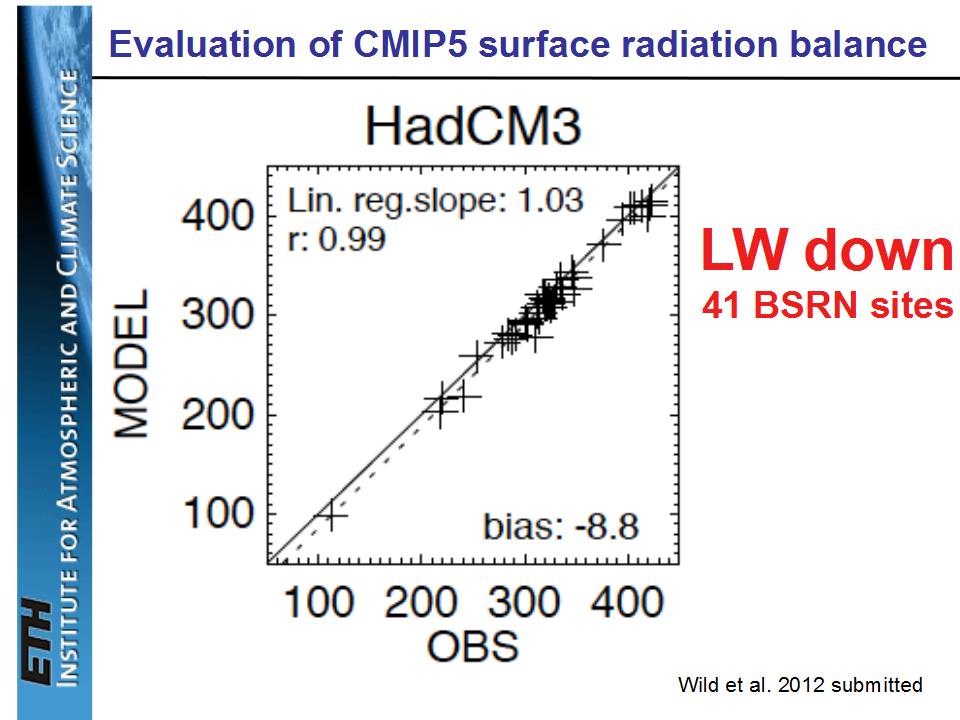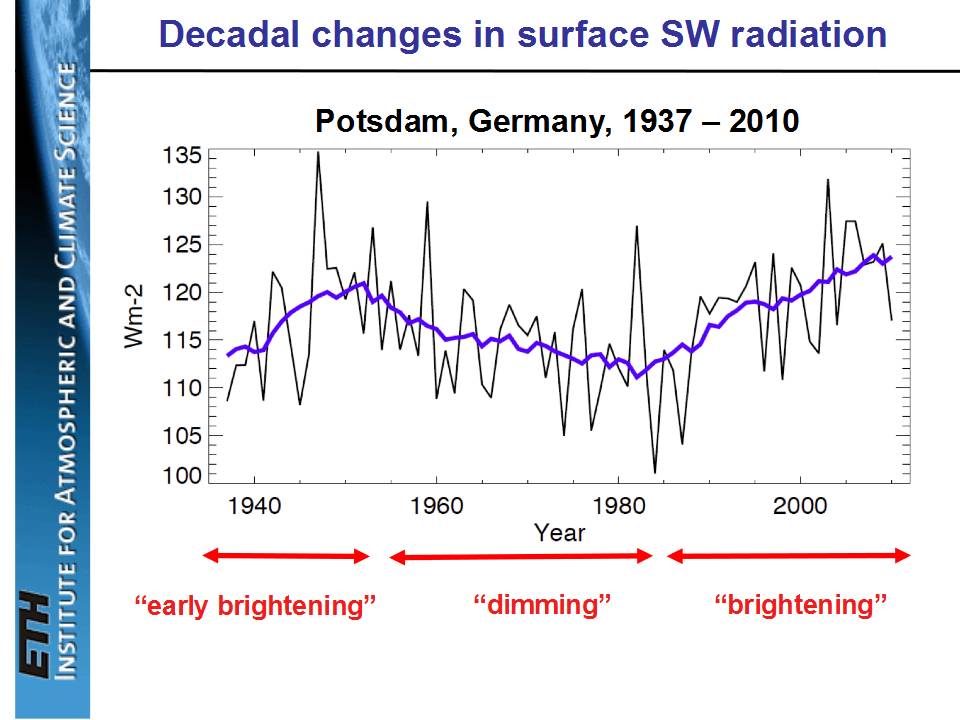I’ve had several requests for evidence of the hundreds of watts of downwelling infrared sky radiation. I’ve mentioned that there are many surface radiation budget observation sites around the world (but few in oceanic areas for obvious reasons). I found this presentation summarizing comparisons that Martin Wild and co-investigators have made between these measurements and the latest CMIP5 climate models at the observation sites. It is quite informative, and includes their version of the Kiehl-Trenberth energy budget diagram to fit better to the surface radiative energy budget observations.
For example, here’s a comparison for downward IR flux at the surface between the HadCM3 model and 41 Baseline Surface Radiation Network (BSRN) stations:

In this case, the model underestimates the downwelling sky radiation by about 9 W/m2. But for something supposedly “non-existent”, there is remarkable agreement between the average model behavior and the observations for this huge (300-400 W/m2) component of the surface energy budget.
What is MOST interesting to me is the existence of multidecadal changes in sunlight (downwelling shortwave) reaching the surface, as some of the sites have such records extending back to the 1930s. For example, changes at Potsdam, Germany look somewhat like how global temperatures have changed:

The authors admit this is behavior not seen in the climate models. I suppose scientists like Trenberth or Dessler would claim these changes are positive cloud feedback in response to surface temperature changes. But the continually neglected possibility is that they have causation reversed: that natural changes in cloud cover have caused the temperature changes, and cloud feedbacks are in reality negative rather than positive.
And this is where I believe we should be spending our research time in the global warming debate. Not arguing over the existence of something (“backradiation”) which is routinely measured at dozens of observation sites around the world.

 Home/Blog
Home/Blog



